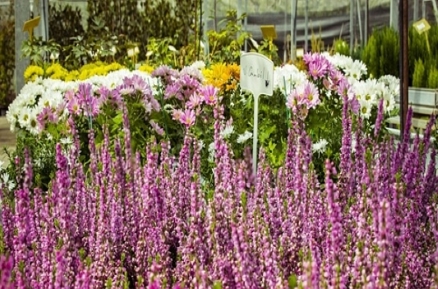Preparing your garden for shemitah

Ahead of the 5782 shemitah year, we put together tips to get your garden ready to bloom throughout the shemitah year
Click here to download the PDF file.
During the shemitah year it is forbidden to sow or plant. So that your garden will bloom throughout the shemitah year, we recommend planting perennials and biannuals ahead of shemitah. Ask your local nursery to provide you with flowers that bloom at different times of the year so your garden will look beautiful all year long.
Each plant has different growing needs. Check first that the plant is suitable for your garden!
Plant flowers that bloom during different seasons
|
Bloom most of the year |
Bloom summer to fall |
Bloom winter or spring |
|||
|---|---|---|---|---|---|
|
Aptenia |
אפטניה |
Common sneezeweed |
הלניון סתוי |
African daisy |
אוזן דב |
|
Bidens |
בינדס (דושן) |
Hummel's sunset |
קרסולה סגלגלה |
Canterbury bells (biannual) |
פעמונית בינונית |
|
Geranium |
גרניום |
Lily of the Nile |
אגפנטוס |
Golden euryops |
עינן מסרקני |
|
Impatiens |
בשמת הגינה |
Wild iris |
דיאטס גדול פרחים |
Indian cress |
כובע נזיר רב שנתי |
|
Pentas |
פנטס |
|
|
Kangaroo paw |
כף קנגרו |
|
Petunia hybrida |
פטוניה מפלית |
|
|
Lemmon's marigold |
טגטס למון |
Give your garden a refreshing look by incorporating varied plants
|
Plants with varied leaf shapes, colors, and textures |
|||||
|---|---|---|---|---|---|
|
Alternanthera |
ביצן |
Compact nandia |
ננדיה ננסית |
Sweet potato |
איפומאה |
|
Blood leaf |
אחירנטוס |
Dichondra |
דיכונדרה |
Persian shield |
אצרובלנית |
|
Coleus |
קולאוס |
Dusty miller |
דרדר מאפיר |
|
|
You can also bury bulbs before shemitah
Bury bulbs in your garden before shemitah. These bulbs will sprout with the winter rain during the shemitah year and will flower at different times. Bury the bulbs in a moist but not wet area, and make sure the appropriate conditions are present. Only after they sprout will it be permitted to water and tend to the flowers:
|
Bulbs that flower mid-winter |
|||||
|
Anemone |
כלנית |
Crocus |
כרכום |
Tulip |
צבעוני |
|
Buttercup |
נורית |
Narcissus |
נרקיס |
|
|
|
Bulbs that flower in the spring |
|||||
|
Calla lilly |
בת קלה |
Hyacinth squill |
בן חצב |
Sword lilies |
סייפן |
|
היפיאסטרום |
Tuberose |
נץ חלב |
|
|
|
Don't forget the planting deadlines before shemitah
(Tip: Don't wait for the last minute!)
15 Av: Bare-rooted fruit trees
29 Av: Fruit trees with roots encased in a clod of earth
15 Elul: Bare-rooted non-fruit trees
26 Elul: Annual decorative plants
29 Elul: Planting with clod of soil – non-fruit trees/ornamental plants/vegetables
Pre-shemitah weed prevention
Remove weeds before shemitah to reduce the seeds in the soil seed bank.
Prevent weeds from growing during shemitah by covering the ground by nylon sheets and spreading black Palrig on top. Alternatively, spread wood clippings on the ground.
Spraying weed herbicides such as Ronstar or Stomp before the rains during shemitah will significantly reduce weed growth. Consult with a professional before applying the spray.
It is possible to use more astringent materials in areas not meant for planting.
Advanced preparations to fertilize your garden
Spread out compost and slow-release fertilizers (SRF) prior to shemitah. Don't forget to bury the compost and fertilizer in the soil.
This is especially important for planters and flowers on window sills—if no fertilizer is applied in advance, these plants will lack nutrients during the shemitah year.
Apply the SRF according to the instructions on the bag. SRF is especially recommended for planters.
The amount of compost needed depends on the soil and the plant in question. In general:
To prepare soil: 5–20 L per m2
Enrich planted areas: 2–5 L per m2
Planters: 5–10f% compost, uniform fashion per substrate.
Adjust the exact quantities according to the soil and plant you are applying fertilizer to.
It is important to use high-quality fertilizer and apply it in a uniform fashion to avoid burning roots.




